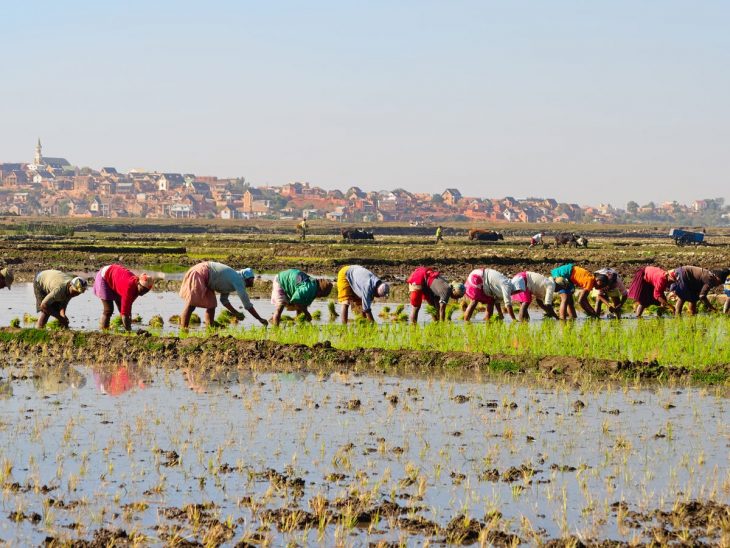
90% of all natural disasters are water-related, making urban flooding one of the leading climate change problems.
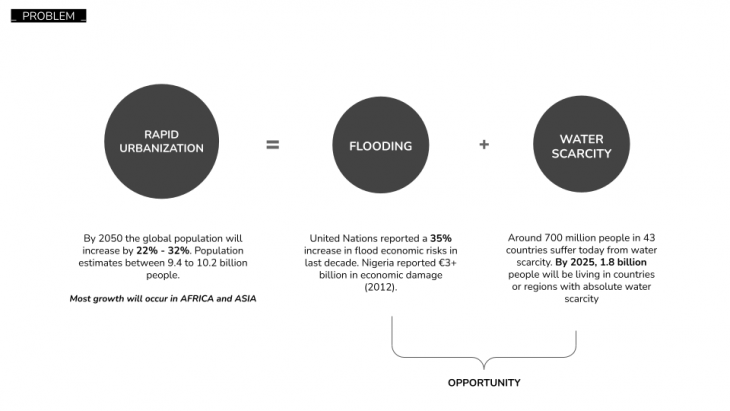
By 2050 the global population will increase by 22% – 32%. Population estimates between 9.4 to 10.2 billion people. Rapid urbanization is the major cause of urban flooding, and with this increased growth, water scarcity has become a linked global issue. Between urban flooding and water scarcity, there lies an opportunity.
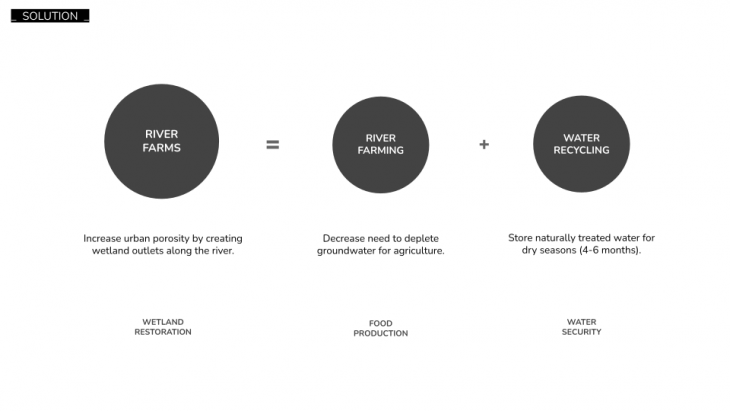
By diverting excess water from the river into farm land, flooding can be utilized. River farming is able to create wetland restoration, thus increasing the land’s potential to absorb water. It also provides food production and recycles potentially dangerous flood waters into productive irrigation.
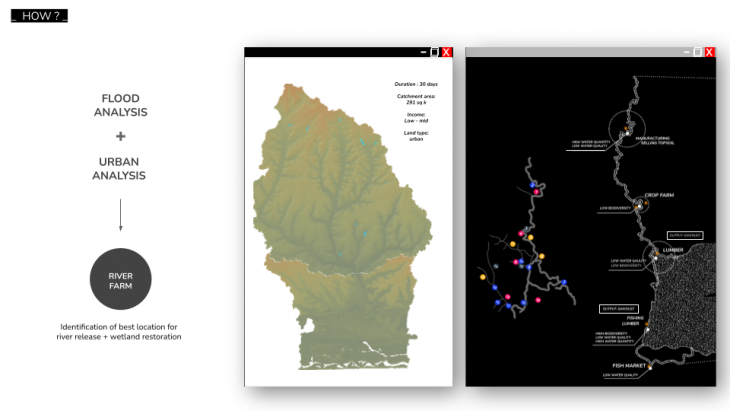
In order to locate the best places for the river farm to effectively utilize flood waters, a flood analysis and urban analysis are conducted. Here we’re able to locate the sweet spots for the farming plots.
As a b2b and a b2g company, we serve both the farmers and the government. We provide flood analysis to the government and farming plots to farmers. This is all accessed on our platform.
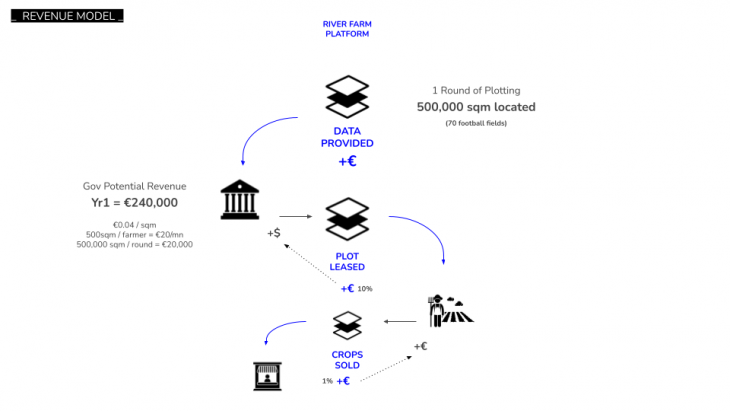
Our revenue comes from providing the plot information to the government. They then approve selected plots and lease them on our platform. When the plots are leased, we take a 10% commission. The farmers rent the plots and sell their crops to vendors. In the future, the selling of crops will also be available on our platform.
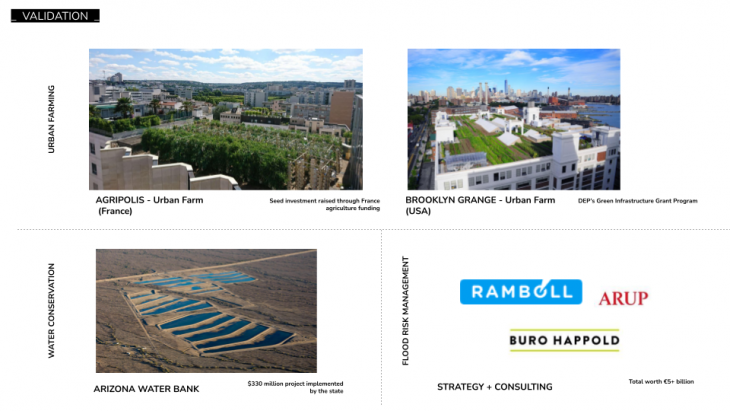
Many countries have invested in urban food production. France has funded the largest rooftop farm in the EU. New York is making the sae investment through their Brooklyn Grange program. Water preservation and utilization has already started in Arizona where they’ve created a water bank. Whereas flood analysis is a very developed industry due to its increasing need.

River farming will focus its early development in developing countries. These regions are facing mass urban flooding and require low-tech innovative flood mitigation strategies. The first steps will take place in Nigeria.

Research and analysis will be executed to find the first round of plots. This round will be done manually without the platform. Plots will be sold to farmers while the platform undergoes development. The next round will then be developed which will kick-off the 1 year pilot program. The next step is neighboring city implementation.
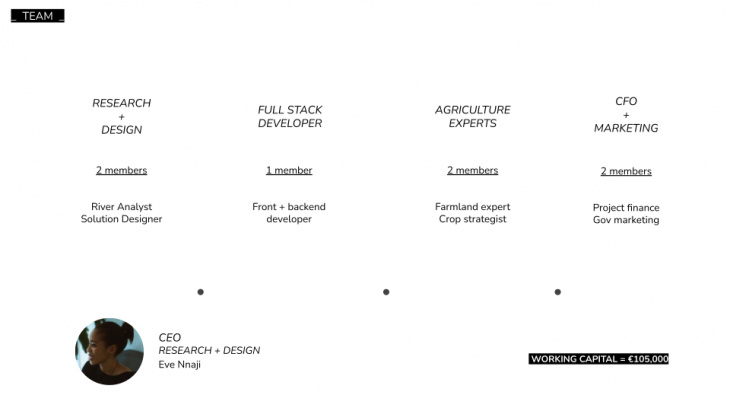
The team consists of 7 members which are divided into research and design, platform development, agriculture, and business.
River Farm can reach profitability by the second year after a round 1 seed investment of 200k.
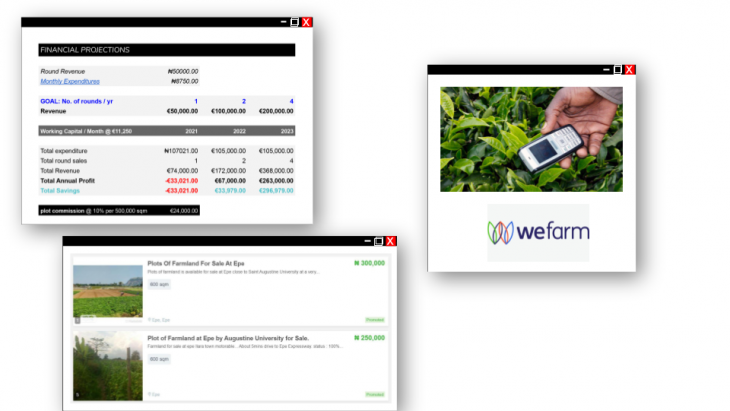
By the second year, 1,500,000 square meters of farmland can be created and producing their second harvest crops. More importantly urban flooding will be decreased, ensuring the growth and development of these vulnerable cities.